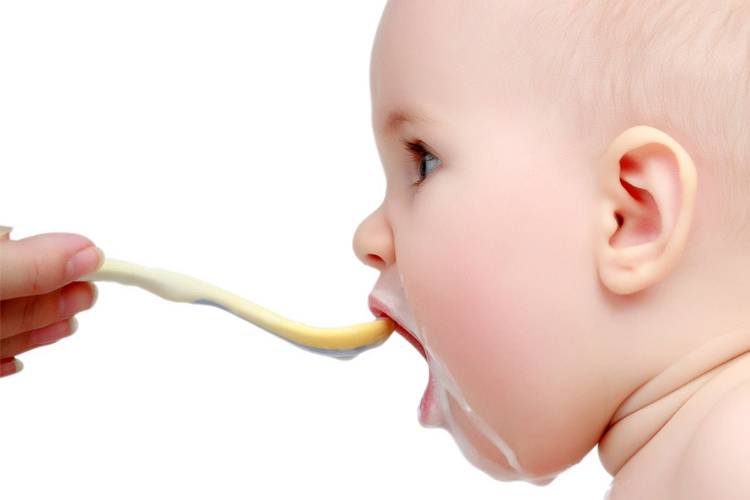Their first meal
One of the most important steps in bringing up a baby is starting to wean him onto solid food, to complement breast or bottle feeding. For many parents, this step can be a challenging task and they don’t always know how to act to ensure that the child adapts without problems to new flavours, smells and textures.
child care
Share

From when the baby is born breast or artificial milk is its main food, but when the baby reaches approximately 6 months, it is advisable to start introducing a variety of complementary foods into his diet in the form of purée, as his nutritional needs change as he grows.
This change of diet requires, above all, patience. Food should be included bit by bit and in small quantities, so that the baby gets used to the new taste, therefore when a few days have gone by, you can mix different foods and start making their diet a little more varied.
Usually we start with fruit or vegetable purée, introducing soft foods like carrots, courgette or potatoes. A little later, when the baby has become used to these, it is advisable to include a little meat, preferably chicken.
We must observe the reactions of our baby after eating, because while his body is getting used to new foods, it is possible that they will cause an intolerance: an increase in temperature, constipation, diarrhoea, etc.
It is also recommended that all foods and especially meat, be well puréed in the blender, because the baby is meeting new textures for the first time, and at the beginning, could reject them.
But if there is one crucial point in this process, which can sometimes seem impossible to achieve, it is that we must remain calm, put ourselves in the baby's place, and not force him to eat anything he really doesn’t like, but at the same time be consistent and try a little every day. It is about trying out all possible combinations so that our child gradually learns to eat everything.
We shouldn’t eliminate milk, even if new foods are introduced into thebaby's diet
JARS OF BABY FOOD, A GOOD COMPLEMENT
A good option for those occasions when time is scarce is to buy jars of baby food. These can help us in our busy routine, and save us a lot of time. They are ready to eat, and have a wide variety of foods and flavours. Keep in mind that once opened, you should only keep them in the refrigerator for a maximum of two days.
Baby food is prepared with a selection of ingredients - fruit, vegetables, meats or fish - that are cooked under controlled conditions to avoid the loss of nutrients. Then they are homogenised, puréed and ready to eat.
In addition, jars of baby food are highly recommended if we decide to go out for lunch, on a day trip, etc. You will always have them ready to eat and they will save you valuable time.
Fruit purée
· 100 g apple
· 75 g pear
· 100 g orange pulp
· 75 g banana
Wash the pieces of fruit, peel and chop them. Purée everything in the blender and, if the baby can tolerate it, introduce 2 or 3 tablespoons of cereal. Once made, the purée should be consumed as soon as possible so as not to lose vitamins.
Vegetable Purée
· 50 g potatoes
· 40 g carrot
· 40 g green beans
· 10 g olive oil
Bring all ingredients to the boil and simmer for 20 to 30 minutes, until cooked. Then purée everything in the blender, add a little salt and it’s ready to eat.
You can gradually add different foods to this recipe, such as 100 g of chicken, veal, monkfish, hake or sole, as well as 75 g of hard-boiled egg.
Foods and Quantities, according to the age of the baby *:
| Age | Texture | Frequency | Amount in each meal |
|---|---|---|---|
| From 6 months onwards | Soft purées of cereal, vegetables, meat or fruit, all well blended | Twice a day, as well as frequent feeds of milk | 2-3 spoons |
| 9-11 months | Food puréed or chopped into small pieces, and foods that the child can grasp hold of | Three meals + a snack between meals, as well as breast/bottle feeding | ¾ of a 250 ml cup |
| 7-8 months | Puréed foods | Three times a day, plus frequent breast/bottle feeding | Gradual increase up to 2/3 of a 250 ml cup with every meala |
| 12-24 months | Whatever the family is eating, chopped or puréed as necessary | Three meals plus two snacks between meals, as well as breast/bottle feedingo | One full 250 ml cup |
*source: WHO (World Health Organisation)
)






